The dashboard was thickly padded and within it was the same engine-turned instrument panel found on the Golden Hawk fitted with Stewart Warner gauges. Beneath the hood was the ‘Jet Stream Supercharged’289 cubic inch V-8 borrowed from the 1957 Studebaker Golden Hawk, it was a model from which the rest of the drivetrain and chassis were shared. Hurley was so pleased with the car he had ordered for personal use that he ordered it to be produced for the 1958 model year surprising to its designer, McRae. The base price of the car was $3,995, the Flightomatic automatic transmission and power steering, and brakes were all made standard. The competition within the company was low due to the differences in prices of the models with the Golden Hawk at $3,282 and the lesser well-equipped Silver Hawk at $2,352. In 1958 were recession and swirling reports of Studebaker-Packard’s business issues with a lot of diminished sales especially of the higher-priced cars. The general output of Packard Hawks was only 588 units.
For 1959, there were no new Packard branded models at Studebaker-Packard. In 1962, the Packard name was dropped and after a few years of operation, the Studebaker closed its doors too. Purchasing a Packard Hawk today would be a good experience due to its rear design, with a 73,000-mile Sportster with a complete front seat and the jack. Also, unique in the Hawks 289 cubic inch V-8 engine is its induction system. It has a cast-iron intake manifold with a Stromberg two-barrel carburetor placed in a cast-aluminum housing which is fed with compressed air from a McCulloch supercharger at a maximum of 5psi of boost. Its exhaust exits through a two-inch stainless steel dual system that has thin mufflers and aftermarket chrome tips.
